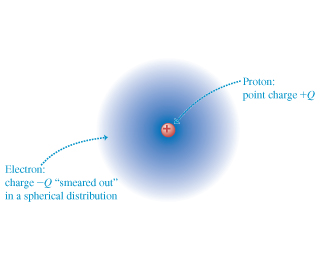

“There were two quantities, known as gravitational form factors, that we were able to pull out, because we had access to these two models: the generalized parton distributions model and the holographic quantum chromodynamics ( QCD) model. The gluonic form factors detail the mechanical characteristics of the proton, such as its mass and pressure. The collaborators were then able to insert these cross section measurements into theoretical models that describe the gluonic gravitational form factors of the proton. “In this case, we did exclusive photo production of the J/ψ from the proton, and we’re getting the gluon distribution instead of the charge distribution.” By doing elastic scattering of the electron on the proton, we’ve been getting the proton’s charge distribution,” said Jones. “It’s similar to what we’ve been doing all along.

Of the billions of interactions, the experimenters found about 2,000 J/ψ particles in their cross section measurements of these interactions by confirming the coincident electron/positron pairs. Once formed, it quickly decays into an electron/positron pair. The J/ψ is a short-lived meson that is made of charm/anti-charm quarks. The experimenters were interested in those interactions that produced J/ψ particles amongst the hydrogen’s proton nuclei.

Detectors measured the remnants of these interactions as electrons and positrons. This beam of photons then struck the protons inside a liquid hydrogen target. The electrons were slowed down or deflected by the block, causing them to emit bremsstrahlung radiation as photons. In the experiment, energetic 10.6 GeV (billion electron-volt) electrons from the CEBAF accelerator were sent into a small block of copper. The experiment was performed in Experimental Hall C in Jefferson Lab’s Continuous Electron Beam Accelerator Facility, a DOE Office of Science user facility. The original goal of this experiment was a search for a pentaquark that has been reported by researchers at CERN,” Meziani said “What we have found is something that we really weren’t expecting to come out this way. “The radius of this mass structure is smaller than the charge radius, and so it kind of gives us a sense of the hierarchy of the mass versus the charge structure of the nucleon,” said experiment co-spokesperson Mark Jones, Jefferson Lab’s Halls A &C leader.Īccording to experiment co-spokesperson Zein-Eddine Meziani, a staff scientist at Argonne, this result actually came as somewhat of a surprise. The result also seems to indicate that this core has a different size than the proton’s well-measured charge radius, a quantity that is often used as a proxy for the proton’s size. The radius of this core of matter was found to reside at the center of the proton. This new measurement may have finally shed some light on the mass that is generated by the proton’s gluons by pinpointing the location of the matter generated by these gluons. Next, it gets mass from the strong force energy that glues those quarks together, with this force manifesting as “gluons.” Lastly, it gets mass from the dynamic interactions of the proton’s quarks and gluons. First, it gets some mass from the masses of its quarks, and some more from their movements. Over the last few decades, nuclear physicists have tentatively pieced together that the proton’s mass comes from several sources. “To fully understand these new observations and their implications on our understanding of confinement, we will need a new generation of high-precision J/ψ experiments.” - Argonne experimental physicist Sylvester Joosten “If you add up the Standard Model masses of the quarks in a proton, you only get a small fraction of the proton’s mass,” explained experiment co-spokesperson Sylvester Joosten, an experimental physicist at DOE’s Argonne National Laboratory. It turns out that the proton’s measured mass doesn’t just come from its physical building blocks, its three so-called valence quarks. One of the biggest mysteries of the proton is the origin of its mass.

The result was recently published in Nature. Department of Energy’s ( DOE) Thomas Jefferson National Accelerator Facility has revealed the radius of the proton’s mass that is generated by the strong force as it glues together the proton’s building block quarks. A recent experiment carried out at the U.S. Nuclear physicists may have finally pinpointed where in the proton a large fraction of its mass resides.


 0 kommentar(er)
0 kommentar(er)
